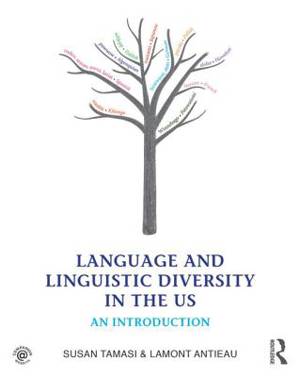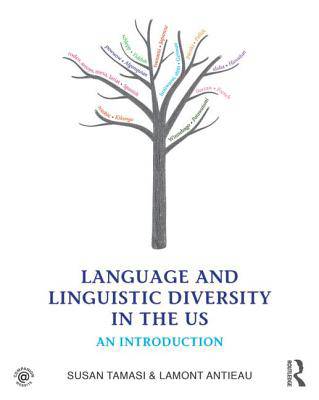
Door een staking bij bpost kan je online bestelling op dit moment iets langer onderweg zijn dan voorzien. Dringend iets nodig? Onze winkels ontvangen jou met open armen!
- Afhalen na 1 uur in een winkel met voorraad
- Gratis thuislevering in België vanaf € 30
- Ruim aanbod met 7 miljoen producten
Door een staking bij bpost kan je online bestelling op dit moment iets langer onderweg zijn dan voorzien. Dringend iets nodig? Onze winkels ontvangen jou met open armen!
- Afhalen na 1 uur in een winkel met voorraad
- Gratis thuislevering in België vanaf € 30
- Ruim aanbod met 7 miljoen producten
Zoeken
Language and Linguistic Diversity in the US
An Introduction
Susan Tamasi, Lamont Antieau
Paperback | Engels
€ 119,45
+ 238 punten
Uitvoering
Omschrijving
A fresh and unique take on a widely taught topic, Language and Linguistic Diversity in the US discusses the many languages and forms of language that have been used in the US and shows how this distribution and diversity of languages has helped shape and define America and an American identity. This accessible volume introduces the basic concepts of sociolinguistics and the politics of language, and is ideal for readers with no prior knowledge of the field.
Specificaties
Betrokkenen
- Auteur(s):
- Uitgeverij:
Inhoud
- Aantal bladzijden:
- 400
- Taal:
- Engels
Eigenschappen
- Productcode (EAN):
- 9780415806688
- Verschijningsdatum:
- 21/11/2014
- Uitvoering:
- Paperback
- Formaat:
- Trade paperback (VS)
- Afmetingen:
- 188 mm x 231 mm
- Gewicht:
- 698 g

Alleen bij Standaard Boekhandel
+ 238 punten op je klantenkaart van Standaard Boekhandel
Beoordelingen
We publiceren alleen reviews die voldoen aan de voorwaarden voor reviews. Bekijk onze voorwaarden voor reviews.











